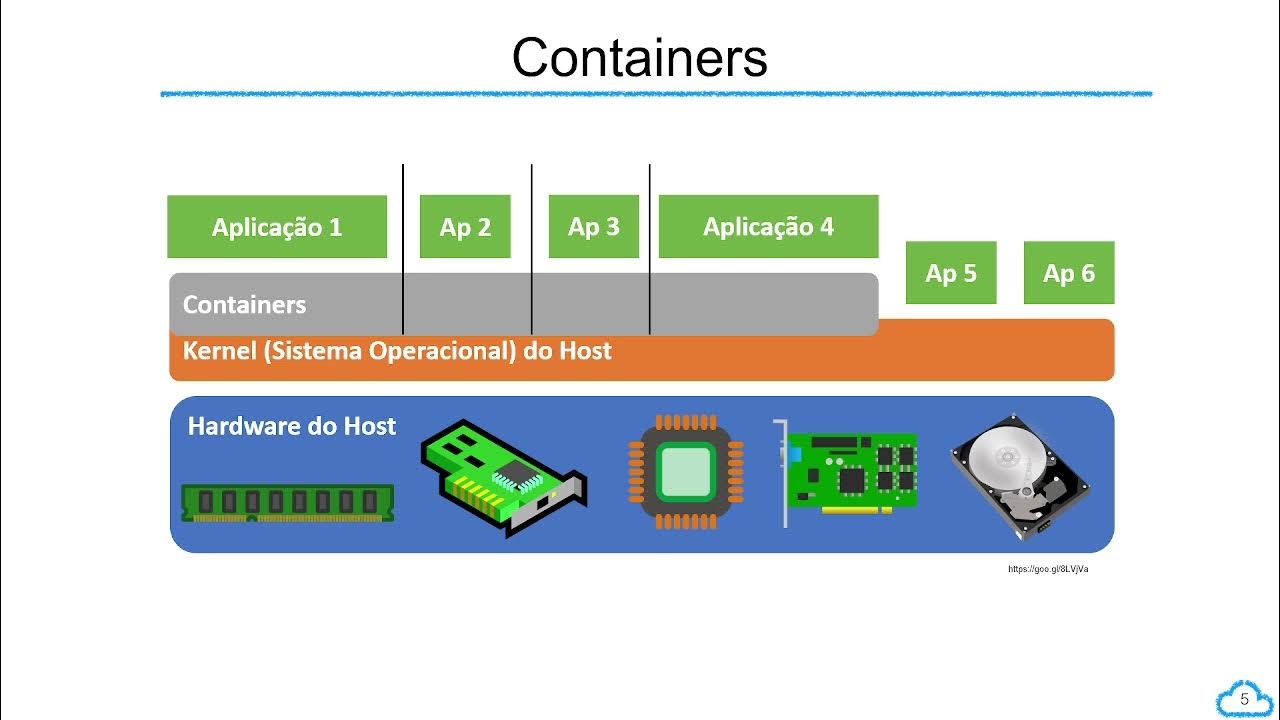Managing containers
Summary
TLDRContainers enhance agility, security, and resource optimization for cloud-based applications. Kubernetes, an open-source platform developed by Google, simplifies the management and orchestration of containers. Google Kubernetes Engine (GKE) helps organizations scale, deploy, and manage applications more efficiently. Ubie, a Japanese healthcare startup, reduced infrastructure costs and maintenance by adopting GKE Autopilot, cutting costs by 20% and eliminating time-consuming upgrades. Additionally, Google Cloud’s Cloud Run offers a fully managed, serverless platform for deploying simple, stateless applications that scale automatically based on demand, making it ideal for lightweight apps.
Takeaways
- 🚀 Containers enhance agility, security, and resource optimization while simplifying cloud application management.
- 🏗️ Many organizations use both virtual machines and containers, increasing infrastructure complexity that requires efficient management tools.
- ⚙️ Kubernetes, developed by Google, is an open-source platform for orchestrating and managing containerized workloads and services.
- 📦 Kubernetes allows easy scaling, deployment, rollouts, and rollbacks across multiple containers and hosts, improving reliability and efficiency.
- ☁️ Google Kubernetes Engine (GKE) is a managed Kubernetes service on Google Cloud, enabling fast, scalable, and customizable cluster management.
- 🧠 GKE clusters can be configured with different machine types, node counts, and network settings to fit specific application needs.
- 🌏 Ubie, a Japan-based healthcare startup, used GKE Autopilot to reduce infrastructure costs and maintenance while running its AI-powered hospital software.
- 💰 By switching to GKE Autopilot, Ubie cut infrastructure costs by 20% and eliminated time-consuming maintenance and upgrade tasks.
- ⚡ Cloud Run is another Google Cloud service that runs containerized applications in a fully managed, serverless environment with automatic scaling.
- 🌐 Cloud Run is best for lightweight, stateless applications like web apps that need rapid scaling with minimal infrastructure management.
- 🔧 In summary, GKE suits complex applications needing control over the Kubernetes environment, while Cloud Run is ideal for simple, fully managed deployments.
Q & A
What are some benefits of using containers in cloud environments?
-Containers improve agility, enhance security, optimize resource usage, and simplify the management of applications in the cloud.
Why do organizations need container management solutions like Kubernetes?
-As IT infrastructures grow more complex with large numbers of virtual machines and containers, organizations need a way to manage, secure, and monitor these services efficiently.
What is Kubernetes and who developed it?
-Kubernetes is an open-source platform originally developed by Google for managing containerized workloads and services, enabling easy orchestration and scaling of containers.
How does Kubernetes improve operational efficiency?
-Kubernetes automates the deployment, scaling, and management of containers, allowing for reliable rollouts, rollbacks, and reduced manual intervention in operations.
What is Google Kubernetes Engine (GKE)?
-Google Kubernetes Engine (GKE) is a managed Kubernetes service hosted on Google Cloud that allows users to deploy, manage, and scale containerized applications easily.
What are some customizable aspects of GKE clusters?
-GKE clusters can be customized with different machine types, node counts, and network settings to suit an organization’s specific infrastructure needs.
How did Ubie benefit from using GKE Autopilot?
-By switching to GKE Autopilot, Ubie reduced infrastructure costs by 20%, eliminated maintenance tasks, and no longer needed to manage cluster configurations manually.
What is GKE Autopilot and how does it differ from standard GKE?
-GKE Autopilot is a mode where Google fully manages the cluster infrastructure, providing per-pod billing and removing the need for users to configure or monitor clusters themselves.
What is Cloud Run and how does it differ from GKE?
-Cloud Run is a fully managed serverless platform for running containerized applications without managing infrastructure, ideal for stateless and lightweight applications. In contrast, GKE provides more control for complex workloads.
When should an organization choose GKE over Cloud Run?
-Organizations should choose GKE when they need fine-grained control over Kubernetes environments and are running complex applications that require customized configurations.
When is Cloud Run a more suitable option?
-Cloud Run is best for simple, stateless applications that need to scale automatically and quickly without requiring manual infrastructure management.
What type of applications are typically deployed on Cloud Run?
-Cloud Run is ideal for lightweight web applications and other stateless workloads that benefit from rapid scaling and serverless operations.
Outlines

This section is available to paid users only. Please upgrade to access this part.
Upgrade NowMindmap

This section is available to paid users only. Please upgrade to access this part.
Upgrade NowKeywords

This section is available to paid users only. Please upgrade to access this part.
Upgrade NowHighlights

This section is available to paid users only. Please upgrade to access this part.
Upgrade NowTranscripts

This section is available to paid users only. Please upgrade to access this part.
Upgrade NowBrowse More Related Video

AMD Cloud Chronicles with Mahindra Group's Abhishek Sukhwal | N18M

HPE Ezmeral Runtime Enterprise

SAFECode Basic Practices for Secure Development of Cloud Applications 101 Quiz Part 1 p3

2 4 1 Cloud native applications

Day-21 | Introduction to Serverless using Azure Functions ? Real Time Usecases #abhishekveeramalla

6 - Containers
5.0 / 5 (0 votes)